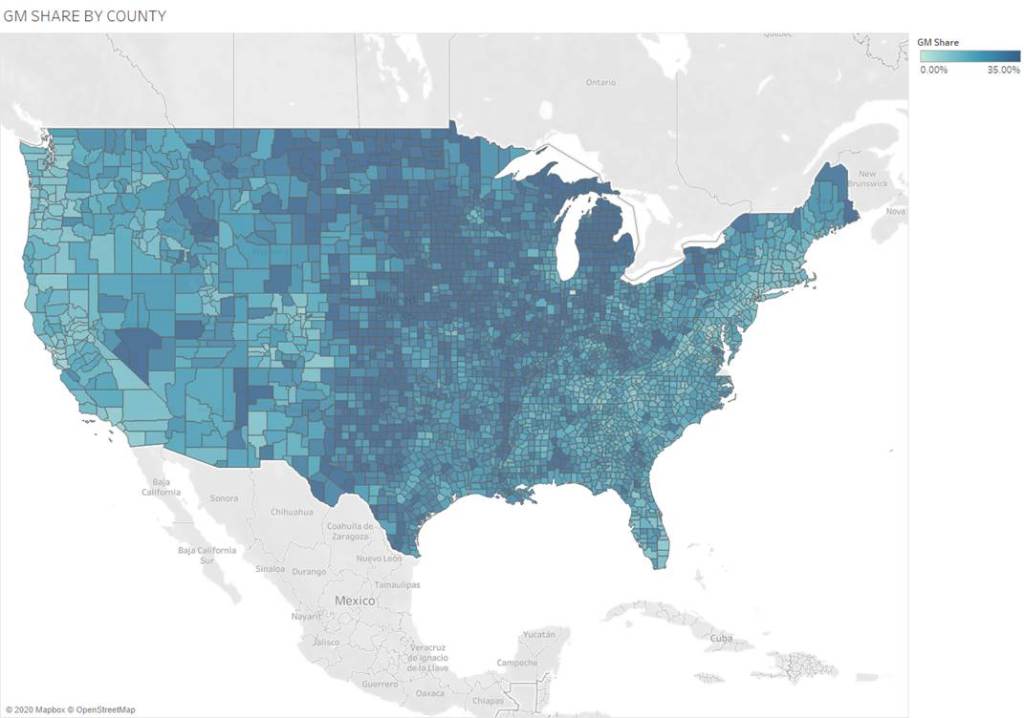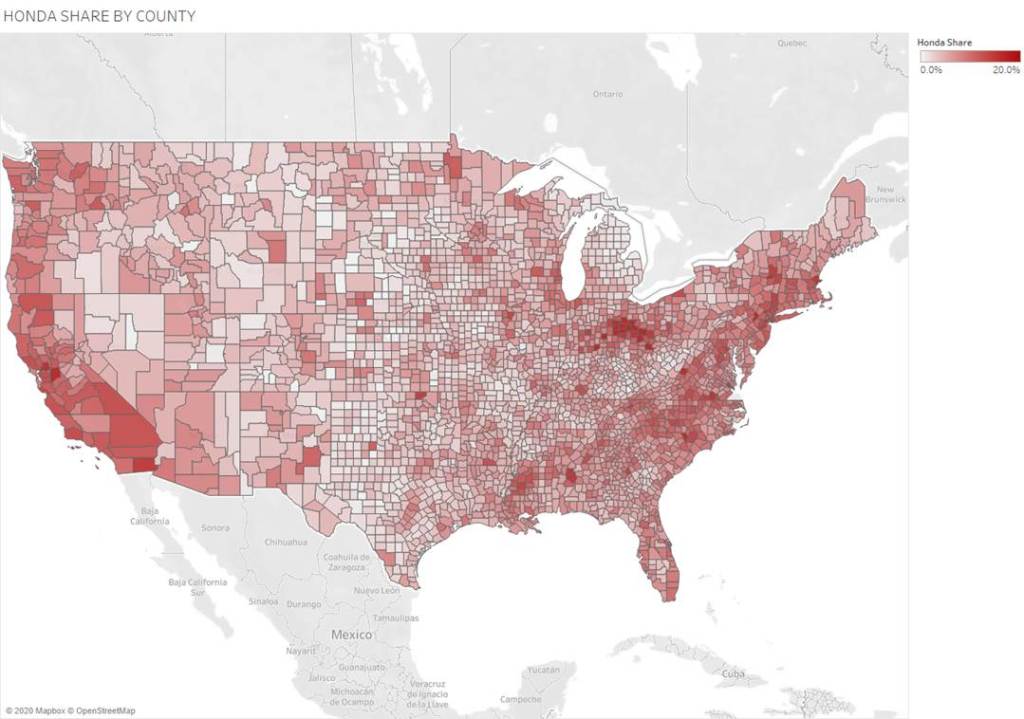Data Point
By the Numbers, a GM and Honda Alliance in North America Makes Good Sense
Thursday September 3, 2020
Article Highlights
- GM and Honda appear to complement each other more than overlap, particularly in terms of geographic footprint, product offerings and price categories of products.
- The geographic strengths of each are due in part to the products they sell.
- The kinds of vehicles the two companies sell vary widely in price distribution.
General Motors and Honda have signed a memo of understanding to form a North American automotive alliance that could include sharing vehicle platforms and propulsion systems, including both electrified and gas ones, for a range of models sold by both brands.
The two companies may also work together in purchasing, research and development and connected services. They will pool their resources to accelerate development of future technologies, like electrification and autonomous vehicles. Already, they are working together on fuel cells and autonomous vehicles.
On paper, GM and Honda appear to complement each other more than overlap, particularly in terms of geographic footprint, product offerings and price categories of products. In other words, initially, the just-announced alliance seems to be a good fit.
Kelley Blue Book calculated Q2 2020 market share for the companies at 10.12% for Honda, which includes the Honda and Acura brands, and 16.85% for GM through its four brands – Buick, Cadillac, Chevrolet and GMC. By volume, GM sold 489,000 vehicles in Q2. Honda sold 293,000.
As the maps show, GM’s geographic strength is in middle of the country. Honda’s strength is on the Coasts, particularly the huge market of California where it is headquartered, the East and Northeast as well as parts of Ohio, where it has the bulk of its manufacturing and tech center operations.
GM has vast dealership coverage in rural areas that Honda – and other import makes – do not. Honda has retailing strength in urban centers.
The geographic strengths of each are due in part to the products they sell. GM sells more pickup trucks than any other automaker through its Chevrolet and GMC brands. Honda has not gained traction in the pickup truck market with its only niche offering, the Ridgeline, which tries to compete with the Chevrolet Colorado and GMC Canyon. Honda has no full-size pickup truck.
Honda’s strength is in smaller vehicles, cars and crossovers. The Honda Accord, Civic and CR-V crossover account for roughly two-thirds of Honda’s sales. All three are among the top in their respective segments. And all three are equipped with exceptionally good engines, delivering high fuel economy. Honda has long been a leader in engine technology, and the Honda brand currently ranks No. 1 in the U.S. for fuel efficiency.
GM’s strength is mostly in its larger vehicles, like trucks and big SUVs. GM has been dropping car lines, including the compact Chevrolet Cruze, the subcompact Chevrolet Sonic, all Buick sedans and some Cadillacs.
The kinds of vehicles the two companies sell vary widely in price distribution as well. According to Kelley Blue Book calculations of average transaction prices (ATP) for the second quarter this year. Honda’s ATP was $29,497 whereas GM’s was $42,795.

As the charts show, well more than half of Honda’s sales volume consists of vehicles in the $20,001 to $30,000 price category. The next highest price category is $30,001 to $40,000 vehicles at nearly 30%. Honda sells virtually nothing (except the Acura NSX) for more than $60,000.

In contrast, GM, with four brands, also sells the bulk of its volume in the $20,001 to $30,000 category, but performs better in the higher revenue categories, selling nearly as much volume in the $30,001 to $40,000 and $40,001 to $50,000 price ranges. With expensive pickup trucks and full-size SUVs available, more than 20% of GM’s total volume is priced well above $50K.


